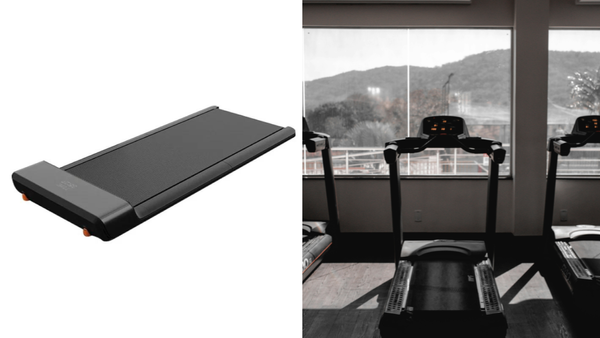Lacrosse is a fast-paced, exciting sport that combines elements of basketball, soccer, and hockey. Whether you're a seasoned player or new to the game, understanding the rules is crucial for enjoying and excelling at lacrosse.
This comprehensive guide will walk you through the essential lacrosse rules, ensuring you're game-ready.
The Lacrosse Team and Player Positions
A standard lacrosse team consists of ten players, including three midfielders, three attackers, three defenders, and one goalie. Each player has a specific role, with midfielders transitioning between the offensive end and defensive half, attackers focusing on scoring, and defenders protecting their team's goal.
The goalie guards the goal crease, using their stick and body to prevent the opponent's shots from scoring.
Essential Equipment: The Lacrosse Stick and More
To play lacrosse, each player needs a lacrosse stick, which varies in length depending on their position. For instance, defenders often use sticks up to six feet long, while attackers opt for shorter sticks for better control.
Additionally, players wear protective gear, including gloves, shoulder pads, and helmets. The stick's head must meet certain specifications, and an illegal crosse can result in penalties.

Understanding the Lacrosse Field Layout
The lacrosse field is divided into two halves by the midfield line. Each half contains a goal and a defensive side, with the area around the goal known as the goal crease.
Players must respect these boundaries during play, and specific rules apply to each zone, such as restrictions on making contact with the goalie within the crease.
The Start of Play: Face Off and Possession
Every lacrosse game and quarter begins with a face-off, where two players crouch down at the midfield line, and the referee blows the whistle to start the contest for the loose ball.
The player who gains possession can then pass, catch, or shoot, initiating the team's offensive play.
Basic Rules for Offensive and Defensive Play
Offensive players aim to score by shooting the ball into the opponent's goal, while defensive players try to prevent this by using stick checks and body positioning.
However, illegal body-checking and cross-checking are personal fouls that can lead to penalties. The defensive team can regain possession by intercepting passes or scooping up a loose ball.

The Intricacies of Stick Checks in Lacrosse
Stick checks are a fundamental aspect of lacrosse defense, but they must be executed within the confines of the rules of lacrosse to avoid penalties. A defensive player is allowed to use his or her stick to try and dislodge the ball from an opponent's stick.
This is done through a variety of checks, such as poke checks, slap checks, and lift checks. Each type of stick check targets a different part of the opponent's stick or body to gain an advantage without committing a personal foul.
However, while stick checks are a legal and strategic part of the game, they must be performed properly. Illegal stick checks, such as cross-checking, where a player uses the handle of his or her stick between their hands to check an opponent, can lead to penalties.
Similarly, a stick check that makes contact with an opponent's head or neck is considered a personal foul and can result in a more severe penalty. Players must be skilled and mindful to execute stick checks without crossing the line into unnecessary roughness.
Defensive Strategies Beyond the Stick Check
In lacrosse, a defensive player has more tools at their disposal than just the stick checks to prevent the opposing team from scoring. Body checks are permitted under certain conditions and can be an effective way to disrupt the opponent's play.
When performing a body check, a player uses his or her body to impede an opponent's movement.
To be legal, the body check must be delivered from the front or side, above the waist, and below the shoulders, and when the opponent has the ball or is within five yards of a loose ball.
Another defensive strategy is the positioning of the defensive player between the opponent and the goal, known as "goal-side" positioning. This technique doesn't involve stick or body contact but requires excellent footwork and spatial awareness.
By staying goal-side, a defensive player can effectively block the path to the opponent's goal and force them to take a less advantageous route or pass.
This non-contact approach is crucial for controlling the opponent's offensive options and is a testament to the strategic depth found in the rules of lacrosse.

Moving the Ball: Passing, Catching, and Shooting
To advance the ball, players must pass or carry it using their sticks. Catching and shooting are fundamental skills, with the objective being to score against the opponent's goal.
A successful shot requires the ball to completely cross the goal line, and the player closest to the ball when it goes out of bounds gains possession.
Fouls and Penalties: Keeping the Game Fair
Lacrosse rules aim to maintain a fair and safe game. Personal fouls like slashing, illegal body checking, and unsportsmanlike conduct result in time-serving penalties.
Technical fouls, such as holding or offside, may result in a turnover or a free hand to the opposing team, allowing them to restart play from where the foul occurred.

Time Regulations: Four Quarters of Intense Play
A standard lacrosse game is played in four quarters, with high school games typically featuring 12-minute quarters.
The clock stops for various reasons, such as when a goal is scored or a penalty occurs. Time management is a crucial aspect of game strategy, especially in the final minutes of play.
Substitutions and On-the-Fly Changes
Lacrosse allows for fluid substitutions, with players entering and exiting the game without a stoppage in play.
Substitutions typically occur during the transition of the ball from the defensive half to the offensive side, allowing fresh players to join the action seamlessly.
After the Whistle: Restarting Play
When the referee blows the whistle for a foul or out-of-bounds ball, play stops, and a free position is awarded.
The offending player must stand five yards away from the player restarting play, giving them space to pass or move with the ball. This rule keeps the game moving and prevents unnecessary delays.
Lacrosse Rules
Some Final Thoughts
Lacrosse is a dynamic sport with a unique set of rules that ensure a fast-paced and fair game. From the composition of the lacrosse team to the intricacies of fouls and penalties, understanding these rules is essential for players and fans alike.
With this complete guide to lacrosse rules, you're now equipped with the knowledge to watch, play, and appreciate the game to its fullest.
FAQ's
How many players are on a lacrosse team?
A lacrosse team consists of ten players, including three attackers, three midfielders, three defenders, and one goalie.
What is a face-off in lacrosse?
A face-off is the method used to start play at the beginning of the game, each quarter, and after each goal. Two players compete to gain possession of the ball after the referee blows the whistle.
What are the most common types of fouls in lacrosse?
The most common types of fouls are personal fouls, such as slashing, illegal body checking, and unsportsmanlike conduct, as well as technical fouls like holding or being offside. Personal fouls typically result in time-serving penalties, while technical fouls may lead to a turnover or a free position for the opposing team.












Member discussion